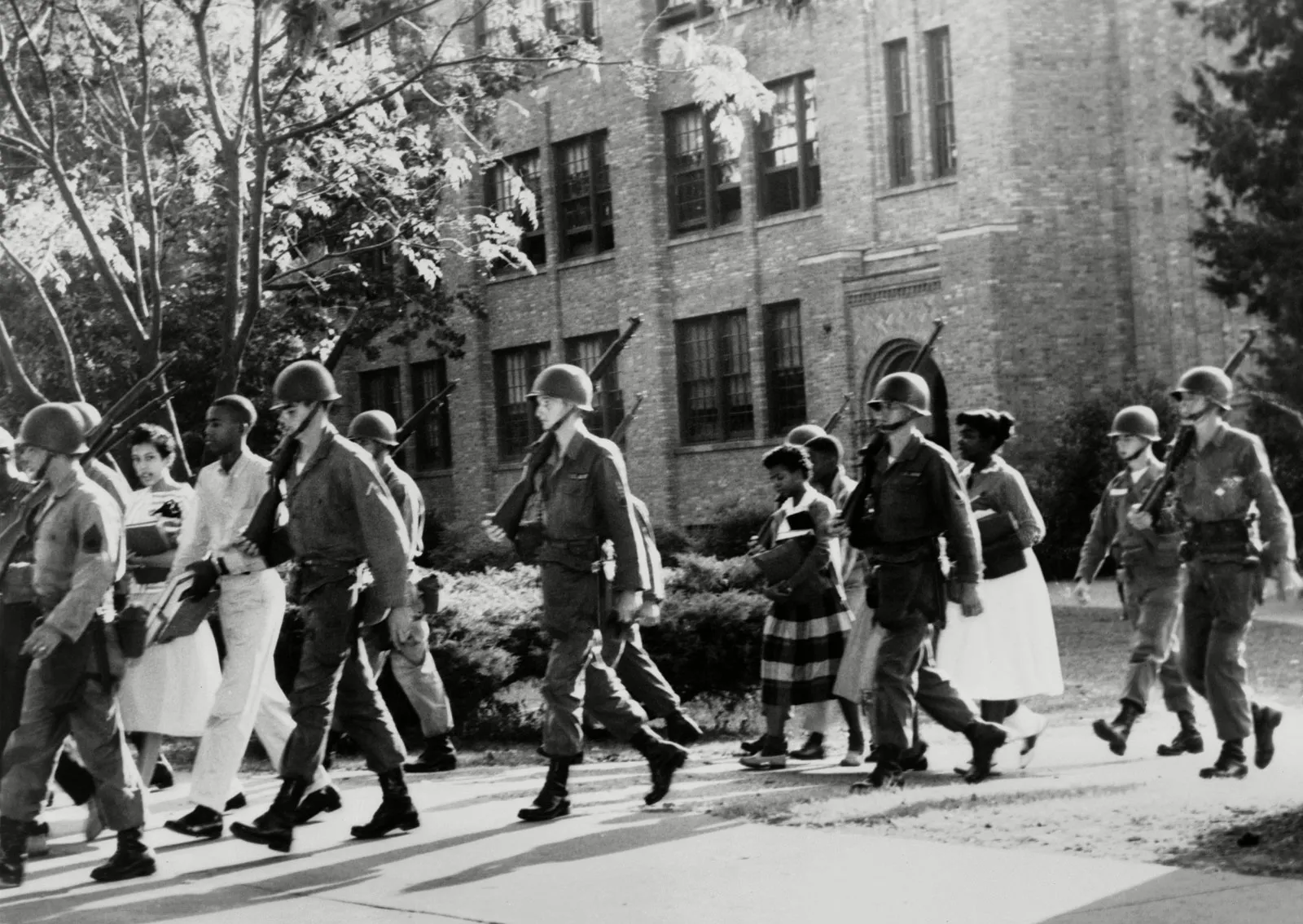After the Civil War came to a conclusion in 1865, the Reconstruction Era marked a moment in history where the U.S. would take a different approach to policy and equality. Congress ratified the Thirteenth, Fourteenth, and Fifteenth Amendments, granting the right to freedom, citizenship, and the vote, respectively. Yet despite such establishments, repeated efforts from southern states to deny black these rights impeded the expected progress following the war.
This common trend persisted as the nation entered the Civil Rights Movement, a pivotal movement in U.S. history that ended with the passage of the Civil Rights Act in 1965, outlawing racial segregation and discrimination. However, this culmination of activism ultimately began with a Supreme Court case that confronted the racist ideals being used to rationalize segregation in the United States.
In 1951, after Linda Brown was denied entrance into an all-white elementary school, her father, Oliver Brown filed a class action suit against the Board of Education of Topeka, Kansas. In 1954, the Supreme Court heard oral arguments as they consolidated this case with others bearing a similar legal question under Brown v. Board of Education. Upon their ruling, the Court held that “separate is inherently not equal” and overturned the Court's prior decision in Plessy v. Ferguson, which legalized segregation throughout the United States. However, while the decision itself represents a poignant moment in U.S. history as the Court set its stance on how racial segregation will be viewed under the full weight of the Constitution, the aftermath impeded the expected progress following the ruling.
After society struggled to implement the decision by integrating black and white students, many southern states shut down their public schools. Instead, they only maintained their private schools that did not have to conform to the Court’s ruling in Brown v. Board of Education. Subsequentially denying blacks the opportunity to integrate into white schools, where they received more funding and bore greater opportunities. For the public schools that remained open in the south, the limited black students that integrated were consistently accosted and harassed.

The Little Rock Nine, nine black students who were the first to integrate into the Litte Rock Central High School gained national recognition for the circumstances they endured. Orval Faubus, the governor of Arkansas, denied black students the opportunity to integrate into white schools. In order to enforce the decision, he ordered the national guard to block the entrance for any black students, violating the Supreme Court’s decision in outlawing segregation in public schools.
Despite the consistent threats made by white protestors who accosted the Little Rock Nine upon entering the high school, the federal government demanded that the students be escorted by the 101st Airborne, an elite military branch, on their way to and from school every day. Even so, the belligerent white mobs outside of the school continued to threaten and harass the nine students.
The story of the Little Rock Nine was no different than six-year-old Ruby Bridges. Born in 1954, Bridges’s birth year coincided with the Supreme Court’s decision in Brown v. Board of Education. However, after many Southern states refused to implement the ruling, in 1959, Bridges attended a segregated New Orleans kindergarten. After a federal court ordered that Louisiana desegregate its public schools, the school district developed entrance exams for black students as a prerequisite to integration. Bridges and five other students passed the exam.

After Bridge’s family decided that the educational opportunities outweighed the inevitable uncertainties of integrating a white school, Ruby Bridges became the first African American to desegregate the all-white William Frantz Elementary School in Louisiana, where she also required an escort by federal marshalls. While Bridges was undeterred by the persistent threats and harassment enforced by the white mod that gathered around the school, she recalls becoming frightened when witnessing a black doll being carried in a coffin on her way to school. While the establishment in Brown v. Board of Education, outlawed segregation in public schools, the delayed process for the implementation of the ruling hampered the Civil Rights Movement’s ultimate goal of abolishing racial segregation, discrimination, and disenfranchisement.